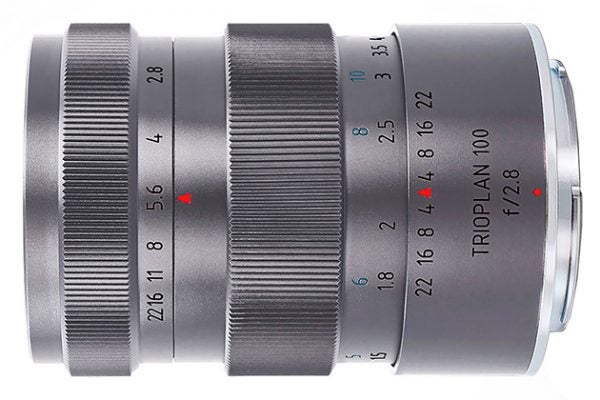What factors determine the appearance of bokeh and how far will people go to achieve this effect?
Bokeh, or boke, is a Japanese term that has become popular over the past 20 years or so. It refers to the quality of the out-of-focus parts of an image, so its meaning is restricted to images that have been shot using narrow depth of field to make use of accentuated differential-focus effects.
The lengths and expense some people are willing to go to in order to achieve a particular bokeh effect is illustrated by the recent launch of the Meyer Optik Trioplan100mm f/2.8 lens. This optic was the subject of a successful Kickstarter campaign, and is a simple three-element Cooke triplet that sells for US $1,700. The high price is because of the fact that this lens is designed to give a very characteristic bokeh that is prized by many users.
Out-of-focus effects are caused by the image plane being behind or in front of the plane of focus of a lens. The effect of this is that a point image is rendered as a disc, rather than a point. This can be seen in many shots of this type that include an out-of-focus bright point of light, such as a reflection from a drop of water or distant lamps. This disc of light is often called the ‘blur circle’, although it’s not usually perfectly circular. One can think of the out-of-focus parts of an image as being a superposition of such a blur circle for each point of the subject, as a sharp image would be a superposition of points. Thus the nature of the blur circle fundamentally determines the quality of the bokeh.
The two most important factors in the blur circle that determine bokeh quality are its shape and the distribution of the light across it. The shape is in fact determined by the aperture diaphragm, and it is generally considered that an aperture that is as nearly circular as possible produces the smoothest, most desirable bokeh. The Meyer lens has a 15-blade diaphragm to ensure circularity. Other less specialised lenses might had seven or nine blades, but with a curved profile. Lenses that have not been designed with bokeh quality in mind, may have just six straight blades, giving a hexagonal opening as the lens is stopped down and creating what is often called ‘busy bokeh’, where the sharp corners of the hexagons create harsh edges.
The second factor is the distribution of light across the blur circle. This is mostly determined by the spherical aberration of the lens, the difference in focus point between rays from the inside and outside of the lens. A well-corrected lens will produce an evenly illuminated blur circle. Normally, an uncorrected lens will give a blur circle in front of the plane of focus (light coming from more distant objects), which is brighter at the edges, like a doughnut. The blur circle from behind the plane of focus (from closer images) is brighter in the centre than at the edges. The latter condition produces a smoother, more ‘creamy’ bokeh. In normal compositions, it is the out-of-focus background objects that are more prominent, so this is the reverse of the desirable condition. Thus, lenses designed specifically for good bokeh will have over-corrected spherical aberration, reversing the above state of affairs. This is not true of the Meyer lens, for it is precisely its ‘soap-bubble’ bokeh that its buyers are looking for. This lens has oodles of classical spherical aberration owing to its very simple design.
Bob Newman is currently Professor of Computer Science at the University of Wolverhampton. He has been working with the design and development of high-technology equipment for 35 years and two of his products have won innovation awards. Bob is also a camera nut and a keen amateur photographer.





